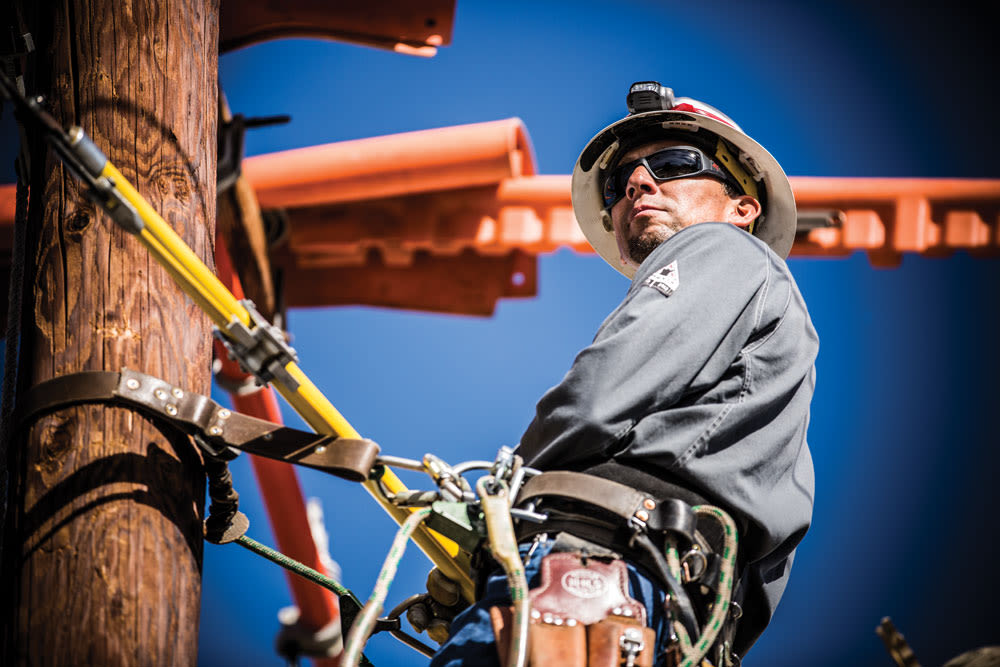
Flame-resistant uniforms by design prevent ignition when exposed to high heat or open flames. These uniforms can self-extinguish when exposed to fire in some cases. They can also provide thermal insulation, so the severity of a burn is significantly reduced if the uniform does catch fire. Because of these features, flame-resistant fabrics and uniforms are essential to worker safety in numerous fields.
What Are Flame-Resistant Fabrics & Uniforms?
Flame-resistant fabrics and uniforms are designed with materials that can do one or more of the following:
Resist igniting when exposed to high heat or flame.
Self-extinguish when exposed to heat or flame.
Provide thermal insulation and reduce the severity of a burn if the uniform catches fire.
To achieve these properties, either the materials themselves are flame- resistant or a chemical has been applied to the uniform. Some fabrics like Nomex are inherently flame- resistant.
Flame-resistant uniforms may be appropriate for the following jobs and industries:
Restaurants and hospitality: Any work environment where workers may be exposed to open flames may warrant flame-resistant uniforms.
Oil industry: Workers in this industry are exposed to high heat and flames on a regular basis, and flash fires present an ongoing risk.
Fire service professionals: Flame-resistant uniforms are mandatory in this industry for obvious reasons. Such materials have helped save the lives and well-being of countless firefighters.
Factory or laboratory work: Any profession that involves mixing chemicals or using open flames to weld metals presents a risk of a flame igniting, so flame-resistant uniforms can help protect workers in such environments as well.
Types of Flame-Resistant Fabrics & Uniforms
Flame-resistant uniforms and fabrics come in many types. Some of the most popular include the following:
Kevlar: This material is used in law enforcement and is inherently resistant to flame ignition. Additionally, Kevlar is dense and strong, making it resistant to high impacts as well.
Nomex: Nomex is also an inherently flame-resistant material that does not combust. It is commonly used in the firefighting industry and in the design of race car driver uniforms.
Cotton-based fabrics: Cotton products like Ultrasoft and Indura are treated with flame-resistant chemicals that help prevent combustion upon exposure to fire. These materials are useful in occupations that have a low to moderate risk of fire exposure, such as restaurant work. However, they are not adequate for occupations where there is high risk of flame exposure, such as the fire service industry.
Flame-resistant uniforms also come in a wide range of styles:
Shirts.
Pants.
Overalls.
Chef’s aprons.
Vests and jackets.
Laboratory coats.
Tips for Selecting Flame-Resistant Fabrics & Uniforms
When selecting a flame-resistant uniform, consider the particular risks and hazards that affect the profession or role in which the garments will be used. The type of material and level of flame resistance needed will vary based on specific occupational demands and risks.
Additionally, comfort is a factor that should not be overlooked. Workers who are uncomfortable on the job will ultimately be less productive and have lower job satisfaction, which can lead to negative impacts on the business.
Consider the following tips and recommendations when choosing a flame-resistant uniform or fabric for your employees:
Understand the risks and hazards of your work environment. This will play an important role in determining the type of material and level of flame resistance needed.
Check the relevant industry standards and regulations . At a minimum, you must ensure that your uniforms comply with industry regulations and any applicable laws in your profession.
Don’t ignore worker comfort. Although meeting industry standards and regulations is a must, don’t forget that your workers will be happier and more productive if they are comfortable. Make sure to choose the best material you can afford because worker comfort will pay dividends in regard to productivity.
Consider maintenance costs. Although cheaper materials may initially save money, they may also require more maintenance or be more easily damaged. Ensure that you read product reviews and consider the brand quality before purchasing a large quantity of uniforms for your workers. The maintenance associated with low-cost materials may ultimately make them more expensive than paying more up front for a better-quality uniform.
Alsco offers a wide range of uniforms and uniform maintenance services to meet your needs, including flame-resistant uniforms. Our uniforms are made of materials that naturally resist burning. Reach out to us today to learn more about our offerings and how we can outfit your employees in the FR uniforms they need. We offer uniform rentals, ensuring that your employees’ uniforms are always in good shape.
References
Personal Protective Equipment (PPE): Flame-Resistant (FR) Clothing. (2023). United States Department of Labor.
Policy for Wearing of Flame-Resistant Clothing in Oil and Gas Drilling, Well Servicing/Workover, Well Abandonment, and Production-Related Operations. (November 2011). U.S. Department of the Interior.
